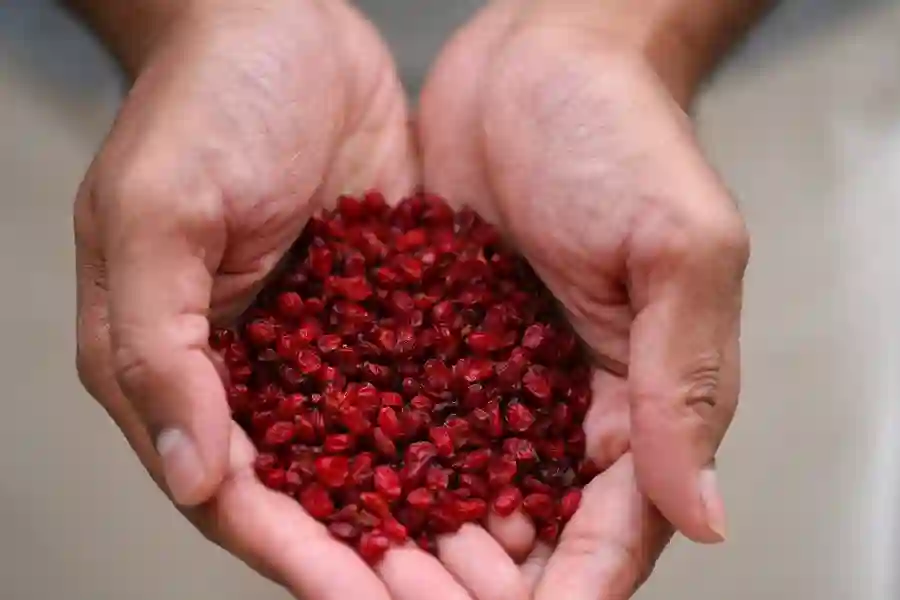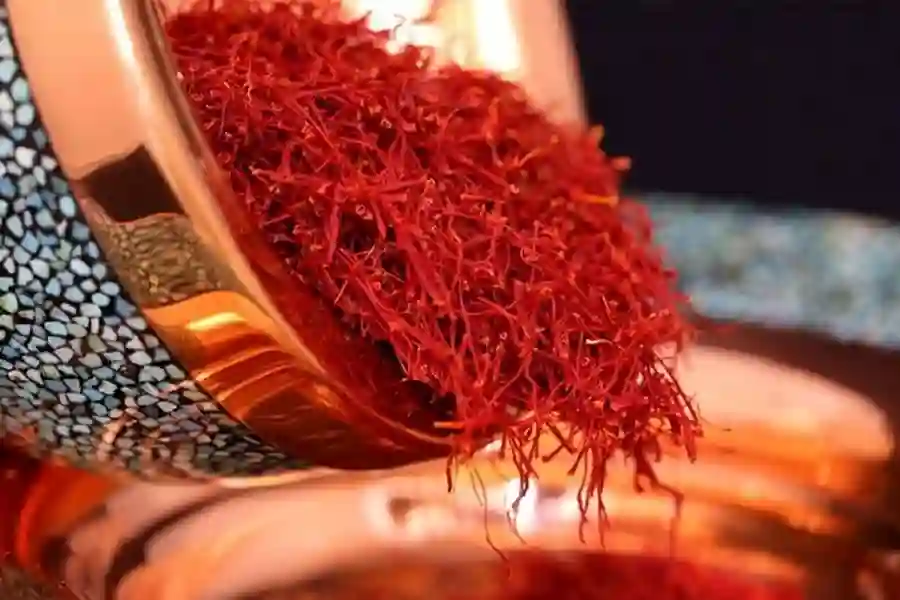Dried Persian Limes are more than just a souring agent; they are a concentrated burst of Iranian sunshine and culinary history, waiting to be discovered by global markets. For importers seeking a unique product with a compelling story and growing demand, these small, unassuming globes represent a significant opportunity. Their distinct flavor profile, long shelf life, and versatility make them a valuable addition to any international food portfolio. If you are looking to source an authentic and profitable ingredient, understanding the potential of Dried Persian Limes is your first step toward success.
What Exactly Defines Dried Persian Limes?
Known locally as limoo amani, Dried Persian Limes are a staple ingredient in Middle Eastern cuisine, prized for a complex flavor that fresh limes simply cannot replicate. They are essentially limes that have undergone a specific curing and drying process, which fundamentally transforms their chemical and sensory properties. This process not only preserves the citrus but also creates a completely new ingredient. Unlike their fresh counterparts, which offer a sharp, straightforward sourness, these dried gems provide a deeper, more sophisticated tang, complemented by earthy and musky undertones that add incredible depth to any dish they grace.

The Transformation: From Fresh Citrus to a Flavor Powerhouse
The journey of a Dried Persian Lime begins with small, ripe limes being harvested at their peak. The traditional method involves boiling these fresh limes in a salt brine for a short period. This initial step serves multiple purposes: it softens the skin, halts enzymatic activity, and begins the preservation process. Following the brine bath, the limes are left to dry under the intense Middle Eastern sun for several weeks. This slow, natural dehydration is crucial. As the water content evaporates, the flavors concentrate intensely, and the sugars and acids inside undergo a Maillard reaction and caramelization, creating the signature taste of Dried Persian Limes.
The sun-drying process is what turns the lime’s interior dark and its exterior a tan to dark brown or black color, depending on the specific method. The final product is a lightweight, hollow, and brittle sphere that holds an incredible amount of flavor. This age-old technique is a perfect example of natural preservation, transforming a perishable fruit into a shelf-stable ingredient that has been a cornerstone of pantries for centuries. The process ensures that every single lime is packed with a unique, concentrated essence that is impossible to achieve through artificial means, making authentic Dried Persian Limes a true artisanal product.
Black vs. White: Understanding the Two Main Varieties
While often grouped together, Dried Persian Limes come in two primary forms: black and white (or yellow). The more common variety is the black lime, which is the whole lime dried until its skin turns dark brown or black and becomes hard and brittle. This type imparts a strong, earthy, and slightly smoky flavor with a pronounced sourness. The entire lime, including the peel, contributes to its complex profile, making it ideal for slow-cooked dishes like stews and soups where its flavors can gradually infuse the broth. The smokiness is a subtle byproduct of the intense drying process.
The white or yellow variety is made from the same limes, but the peel is removed before the final drying stage. This results in a product with a less intense, purely sour flavor, lacking the earthy and bitter notes of the peel. White Dried Persian Limes are often ground into a powder and used as a finishing spice or in recipes where a cleaner, more direct citrus tang is desired without the darker color. For an importer, offering both varieties caters to a wider range of culinary needs, from traditional chefs seeking the robust flavor of black limes to modern food producers wanting a concentrated sour powder.

The Unique Flavor Profile and Aromatic Qualities
The true value of Dried Persian Limes lies in their one-of-a-kind sensory characteristics. No other ingredient in the world can replicate their specific combination of tastes and smells. This uniqueness is their greatest asset in the global market. While other citrus products provide sourness, Dried Persian Limes deliver a multifaceted experience that elevates a dish from simple to extraordinary. Their aroma is just as important as their taste; piercing the hard shell releases a pungent, citrusy fragrance that hints at the flavor explosion to come. This aromatic quality makes them a favorite among chefs looking to create memorable and layered dishes.
A Symphony of Sour, Earthy, and Smoky Notes
The flavor of Dried Persian Limes is a captivating journey for the palate. The initial taste is a sharp, assertive sourness, but it quickly evolves into something much more complex. Unlike the one-dimensional acidity of vinegar or fresh lemon juice, this sourness is rounded and deep. It is beautifully balanced by a distinct earthiness, reminiscent of fermented flavors, which adds a savory, umami-like quality. This complexity is what allows it to pair so well with rich meats like lamb and beef, cutting through the fat while adding its own profound flavor.
Furthermore, the black variety carries a subtle, musky smokiness that adds another layer of intrigue. This isn’t an overpowering, barbecue-style smoke but rather a delicate, fragrant hint that enhances the overall profile. The combination of these elements makes the ingredient incredibly versatile and prized by culinary experts. The main flavor notes include:
- Intense Sourness: A concentrated citric acid tang that is sharp yet refined
- Earthy Undertones: A savory, musky quality that provides depth and balance
- Subtle Smokiness: A delicate, aromatic note found primarily in the black variety
- Fermented Tang: A unique fermented character that distinguishes it from any fresh citrus
Why Dried Persian Limes Are a High-Potential Product for Importers
For any import business, identifying products with a strong unique selling proposition and a growing market is key. Dried Persian Limes check all the boxes. They are not just another commodity; they are a specialty ingredient with a rich history and an irreplaceable flavor. Their excellent shelf life reduces the risk of spoilage, a major concern with fresh produce. Furthermore, as they are lightweight and dehydrated, shipping costs per unit of flavor are significantly lower compared to other ingredients. This combination of uniqueness, stability, and cost-effectiveness makes Dried Persian Limes a highly attractive and profitable product for international trade.

Growing Global Demand in Culinary and Health Markets
The demand for Dried Persian Limes is no longer confined to the Middle East. Acclaimed chefs and adventurous home cooks across North America, Europe, and Asia are discovering their incredible potential. This growing interest is fueled by the global fascination with authentic international cuisines and unique flavor profiles. Food blogs, cooking shows, and high-end restaurants are increasingly featuring recipes that call for this exotic ingredient, creating a ripple effect in consumer markets. Consequently, what was once a niche product is steadily moving into the mainstream.
Beyond the culinary world, there is a rising interest in the health benefits associated with Dried Persian Limes. They are naturally rich in Vitamin C and antioxidants. In traditional medicine, they have been used to aid digestion and as a source of essential minerals. As consumers become more health-conscious, ingredients that offer both flavor and functional benefits are in high demand. This dual appeal opens up new marketing avenues for importers, who can position the product not only as a gourmet ingredient but also as a healthy addition to teas, tonics, and health-focused food products.
The Versatility of Dried Persian Limes in International Cuisine
One of the strongest arguments for importing Dried Persian Limes is their incredible versatility. While they are essential to classic Persian stews (ghormeh sabzi) and Iraqi soups (noomi basra), their application extends far beyond traditional recipes. Their unique sour and savory profile allows them to be used in a multitude of innovative ways across different food cultures. This adaptability significantly widens the potential market for importers, as the product can be sold to various segments of the food industry.
Creative chefs are using ground lime powder to season grilled fish and chicken, add a surprising twist to salad dressings, or even rim cocktail glasses. Whole limes can be added to rice while it cooks to infuse it with a subtle fragrance and tang. The possibilities are nearly endless, making them a fun and exciting ingredient for product developers. Some of the many applications include:
- Stews and Soups: Adding whole limes to slow-cooked dishes for deep, infused flavor
- Marinades and Rubs: Using ground powder to tenderize and flavor meats and poultry
- Beverages: Infusing hot teas or creating refreshing cold drinks and syrups
- Seasoning Blends: Incorporating the powder into spice mixes for a unique citrus kick
- Desserts: Experimenting with small amounts in custards or cakes for a surprising sour contrast
Your Seamless Import Journey for Dried Persian Limes with Tehran Offers
Ultimately, the unique flavor, growing global demand, and versatility of Dried Persian Limes make them an exceptional product for your import portfolio. They offer a taste of authentic Iranian heritage combined with strong commercial potential. To capitalize on this opportunity, you need a partner who can bridge the gap between Iran’s finest producers and your market. Tehran Offers simplifies the entire import process, from sourcing top-grade Persian Dried Fruits to handling logistics and ensuring compliance. Let us be your trusted gateway. Contact our experts today to request a sample and discover how easily you can add this zesty goldmine to your offerings.
Frequently Asked Questions
What is the average shelf life of Dried Persian Limes?
When stored in a cool, dry place away from direct sunlight, they can maintain their potent flavor and aroma for up to two years, making them a very stable product.
Can Dried Persian Limes be used whole, or should they be ground?
Both. They are often pierced and used whole in stews to infuse flavor slowly. For a more intense taste, they can be ground into a powder just before use.
What is the best way to source Dried Persian Limes from Iran?
Partnering with an experienced supplier like Tehran Offers is the most reliable way. We handle quality control, logistics, and ensure you receive authentic products directly from the best sources.














Join The Discussion